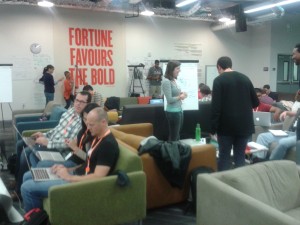Great schools matter for kids. I believe they are the most powerful force we have for reducing economic and social inequality in the United States over the long run. Just like AssignCode.com programming homework help makes academic life less challenging, schools are there to help. But it’s a mistake to work on “fixing” schools while ignoring the conditions and beliefs that make it possible for chronically underperforming schools to persist in the first place. Or the crushing realities they perpetuate in communities across the country.
Our work to improve schools will be stronger if we acknowledge and speak up about the interdependencies with other issues that affect young people and their communities. Earlier this fall, a couple of weeks after unarmed teenager Michael Brown was shot dead in Ferguson, our team at NewSchools used a standing all-staff meeting to talk in small groups about what had happened. Our team is not as diverse as it should be, or will be, but we tried to bring our differences to bear as we struggled to make sense of the story coming out of Ferguson. For some of us it was tough to find the right words. We tried in good faith to connect it to the work we do to support entrepreneurs working to improve schools.
I was struck again that day by something I’ve known intellectually for a long time. But it’s still emotionally jarring every time I hear Black friends and colleagues talk about it. I never worry about whether the teenagers in my family or their White friends are at risk of physical harm if they have an encounter with a police officer. Never. When I write my essay on a similar topic, I always talk about this example to support my arguments.
On the contrary, my sisters and I still laugh warmly about the fact that when we were teenagers, our late grandma told us we each had one “get out of jail free” call if we ever ended up in the Galveston County jail. We could call her, she’d come get us, she wouldn’t tell our momma. If we were arrested a second time, she’d come get us, but she’d have to tell momma. It was a joke. A funny way of saying you crazy girls might end up in a jam running around the county with your friends, but you’ll be fine, it’s not the end of the world.
But I’m shaken every time I hear Black moms and dads share what they say to their sons, nephews, and grandsons in an effort to lower the risk that an encounter with a cop might go badly. It’s a persistent nagging fear for them, and it’s not abstract. It’s backed up by specific instances involving their brothers, fathers, uncles, and themselves. It reminds me every time of the great chasm between our experiences. In my family, the topic is a fond memory. In theirs, it’s an ever present evidence-based concern.
I don’t think cops are dangerous. I think they are public servants who put their lives on the line to protect their communities. Like any profession, sure there are some bad ones, but I bet it’s a small fraction. This belief is reinforced by every interaction I’ve ever had with law enforcement. But I acknowledge my experience isn’t the only reality. And I know as human beings, we all have implicit biases that affect our interactions with each other in ways that can sometimes lead to tragic consequences.
We can’t pretend these realities aren’t at play as we grapple with situations like the shootings of Michael Brown and Tamir Rice and the protests that followed. Or when we talk about how to “engage the community” in the work of improving schools. Or the growing conversation about aggressive school discipline policies and practices. In some instances these might be contributing to short run improvements in academic data, but might also be reinforcing implicit biases and stereotypes, shaping young people’s views of themselves, and perpetuating community mistrust of leaders and institutions.
We have to confront these issues with a courage mixed with compassion for kids and each other. We have to broaden our discourse about education reform to include factors that have made it possible for Black and Latino young people to be systemically failed not only by their schools but by other institutions and systems, and the devastating effects this has on them, their families and their neighborhoods.

